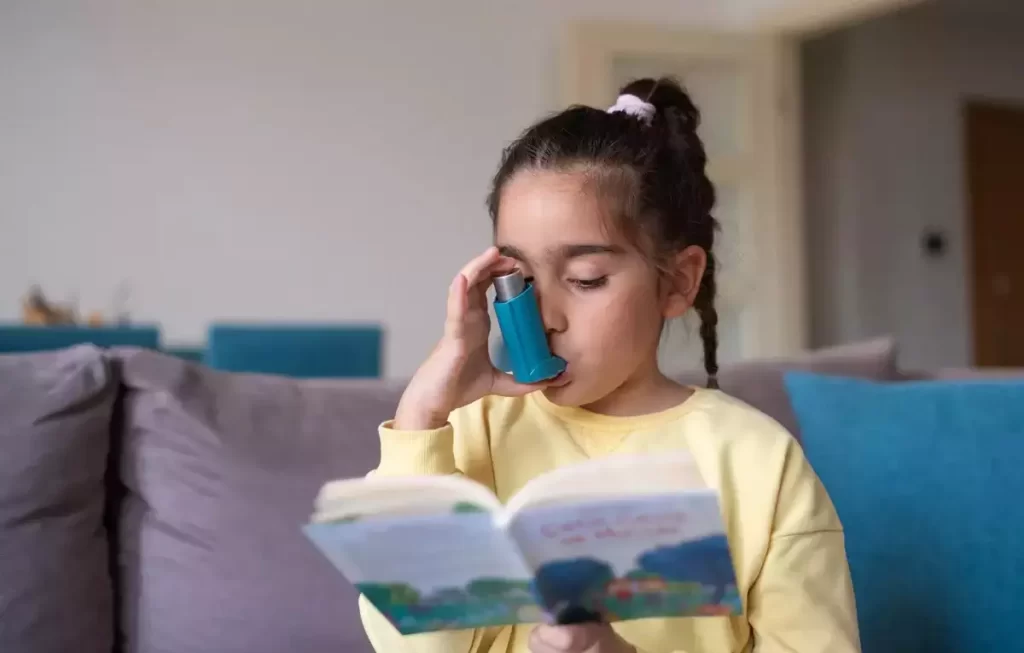For millions of children in the United States diagnosed with asthma, finding effective treatment often begins with accurately identifying the specific subtype of the disease. Researchers at the University of Pittsburgh have developed a groundbreaking nasal swab test that may revolutionize asthma diagnosis, offering a precise method to distinguish between different types of the condition. This innovation is a significant step forward in the quest for personalized asthma care, particularly for populations disproportionately affected by the disease.

Understanding Asthma: A Complex Lung Disease
Asthma, a chronic lung condition, impacts over 4.6 million children in the U.S. The disease is generally divided into two primary categories based on the type of inflammation involved:
- T2-High Asthma:
- Caused by inflammation driven by T helper 2 cells.
- Historically considered the most common subtype.
- T2-Low Asthma:
- A broader category that includes two subtypes:
- One with minimal inflammation.
- Another characterized by inflammation from non-T helper 2 cells.
- A broader category that includes two subtypes:
Determining the type of asthma is crucial in moderate to severe cases, as it helps clinicians tailor treatments. However, traditional diagnostic methods, such as blood tests or nitric oxide measurements from breath samples, often lack accuracy and are limited to detecting T2-high asthma.
The Innovation: Nasal Swab Test for Asthma Diagnosis
To address these limitations, researchers developed a novel test that uses nasal swabs to sequence RNA. This technique identifies genetic markers associated with different asthma subtypes:
- T2-High Asthma: Identified by the overexpression of specific inflammation-related genes.
- T2-Low Asthma: Diagnosed by the absence of these genetic hallmarks or the presence of alternative markers.
The findings, published in JAMA, demonstrate that the nasal swab test is not only accurate but also capable of diagnosing subtypes beyond the T2-high classification.
Study Details and Results
The researchers tested over 450 children and teens across three distinct studies in Puerto Rico and Pittsburgh. The participants predominantly included Puerto Rican and non-Hispanic Black children, groups that face higher asthma rates and asthma-related deaths compared to white children in the U.S.
Key outcomes of the study:
- The nasal swab test successfully diagnosed multiple asthma subtypes.
- T2-low asthma was found to be the most common subtype among participants, a finding associated with environmental factors like air pollution.
Why This Matters: Addressing Health Disparities
Asthma disproportionately affects Black and Puerto Rican children, who are more likely to encounter environmental triggers such as air pollution, dust, and mold. The inclusion of these populations in the study underscores the test’s potential to address long-standing health inequities by improving diagnostic accuracy and treatment accessibility.
Benefits of the Nasal Swab Test
- Enhanced Precision:
- The test offers a more reliable way to identify asthma subtypes compared to traditional methods.
- Non-Invasive:
- A nasal swab is less intrusive than blood tests, making it more child-friendly.
- Broad Applicability:
- The ability to diagnose both T2-high and T2-low asthma opens new doors for targeted treatments.
Future Implications for Asthma Treatment
The standard treatment for asthma involves steroids, typically delivered via inhalers. While effective for many, steroids may not suffice for moderate or severe cases. For such patients, newer FDA-approved biologics—injectable or intravenous drugs—target molecules that trigger airway inflammation but are mainly tailored for T2-high asthma.
Dr. Juan Celedón, one of the study’s authors and chief of pulmonary medicine at UPMC Children’s Hospital of Pittsburgh, emphasized that the nasal swab test could pave the way for better treatment matching.
“Instead of treating most people the same, in a few years, we can treat you better according to the type of asthma you have,” said Celedón.
Moreover, the test could facilitate the enrollment of T2-low asthma patients in clinical trials to explore novel therapies for this subtype.
Challenges and Considerations
Despite its promise, the nasal swab test is not yet ready for widespread clinical use. Key hurdles include:
- FDA Approval:
- The test must undergo regulatory scrutiny before it can be implemented in healthcare settings.
- Cost and Complexity:
- Genetic sequencing is expensive and requires skilled professionals to interpret RNA results.
- Consistency of Asthma Types:
- More research is needed to determine whether a child’s asthma type remains stable or changes due to environmental factors like pollution and allergens.
Dr. Jessica Hui, a pediatric allergist at National Jewish Health in Denver, highlighted these concerns while expressing optimism about the test’s potential.
“It’s a very specialized type of analysis,” she noted. “It’s not something we can implement immediately, but for sure it’s an exciting direction.”
A Step Toward Personalized Medicine
This novel diagnostic method represents a crucial advancement in asthma research and treatment. By identifying specific asthma subtypes, the nasal swab test has the potential to transform how clinicians approach this complex disease. While challenges remain, the test is a promising first step toward achieving personalized medicine for asthma patients, particularly for underserved and vulnerable populations.
FAQs
1. What is T2-high asthma? T2-high asthma is a subtype characterized by inflammation caused by T helper 2 cells, often detected by measuring specific immune markers like antibodies or nitric oxide levels in breath.
2. How does the nasal swab test for asthma work? The test sequences RNA from nasal swabs to detect genetic markers associated with different asthma subtypes, offering a precise and non-invasive diagnostic method.
3. Why is the nasal swab test significant for children of color? The test addresses health disparities by focusing on populations, such as Black and Puerto Rican children, who face higher asthma rates and related health risks.
4. Are there limitations to the nasal swab test? Yes, it requires FDA approval, is costly, and depends on expertise in RNA sequencing. Further research is also needed to validate its long-term reliability.
5. What treatments are available for T2-low asthma? Currently, treatment options are limited, but the nasal swab test could aid in developing new therapies targeting this subtype.




